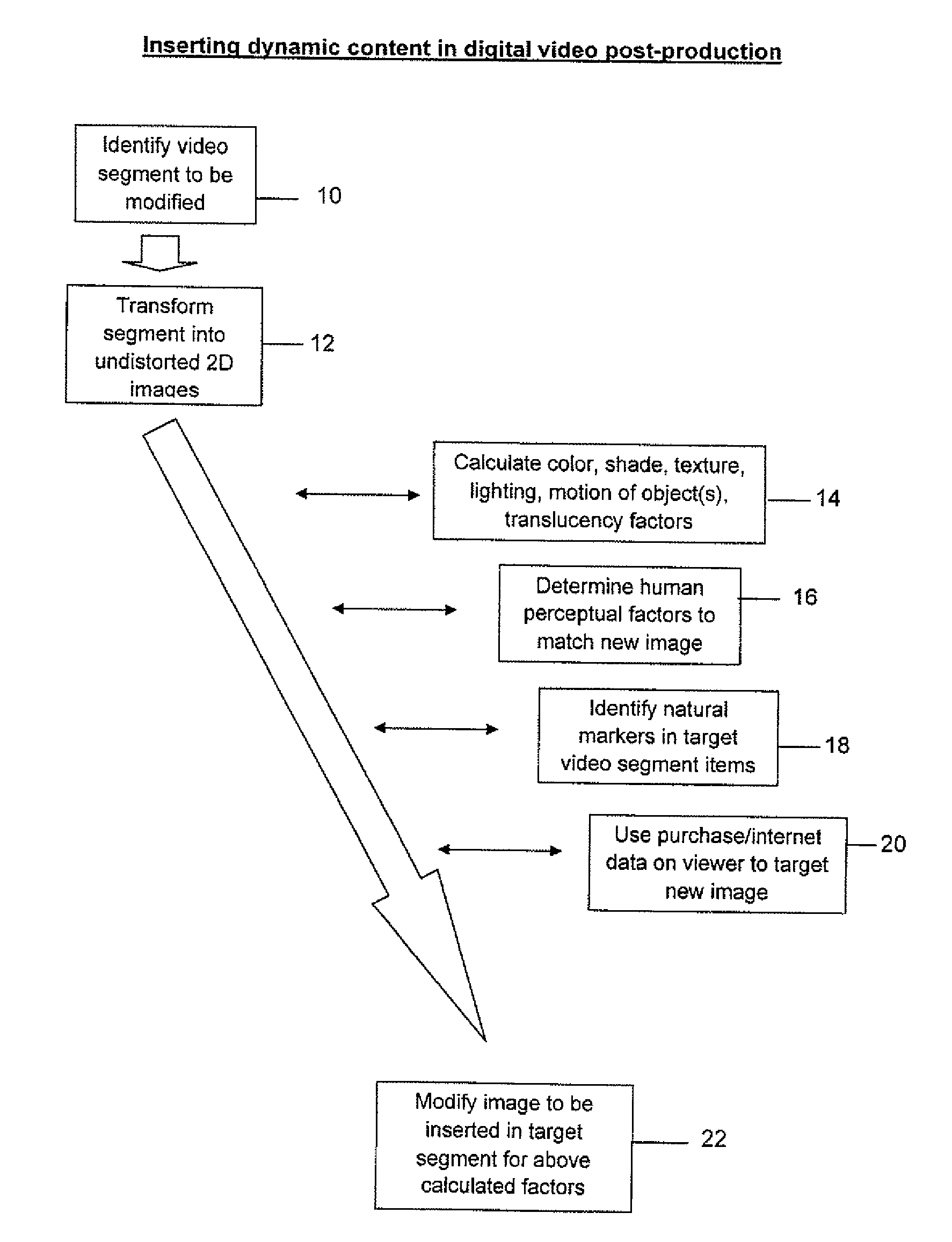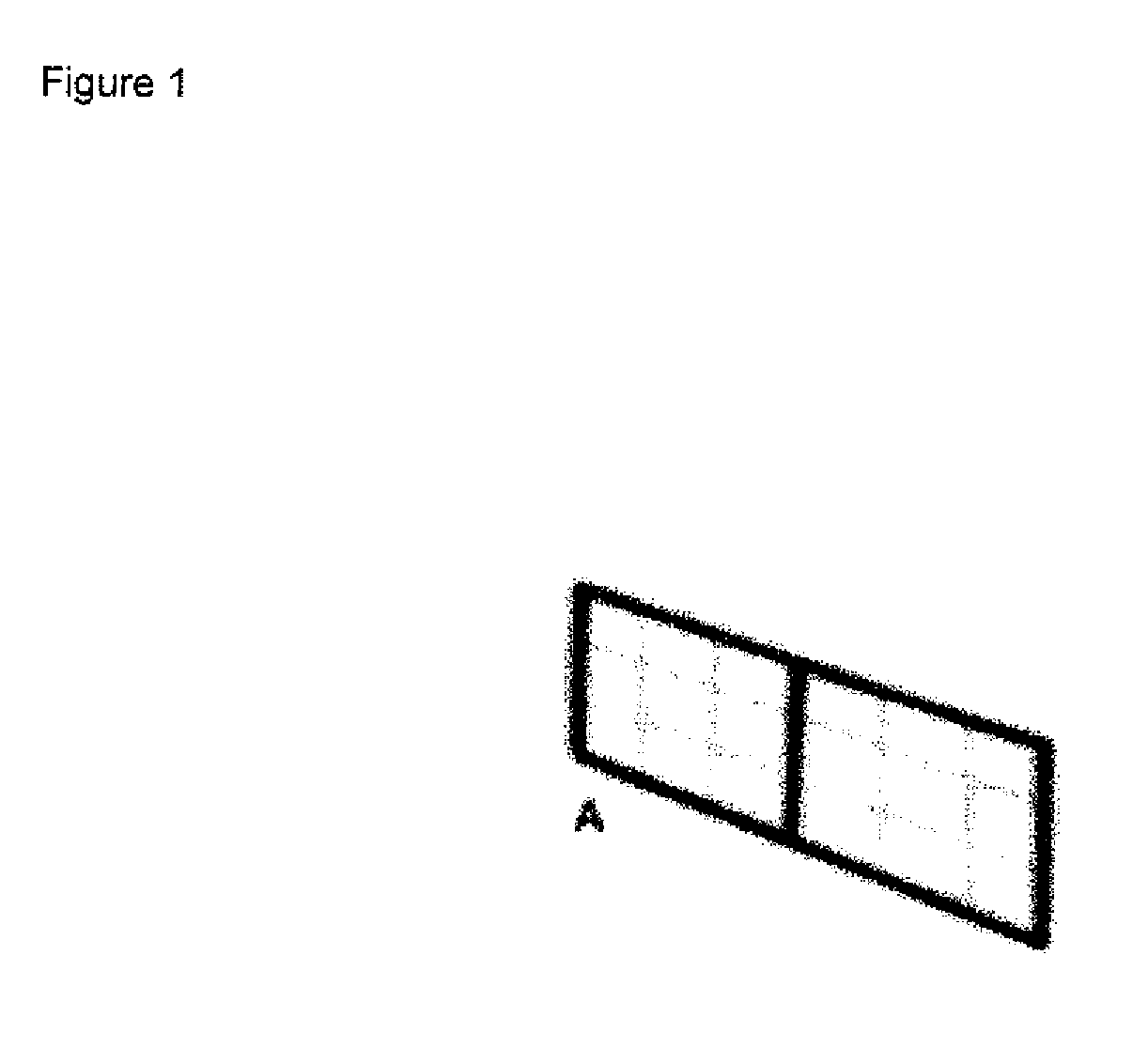Method and system for inserting and/or manipulating dynamic content for digital media post production
a dynamic content and digital media technology, applied in the field of digital image manipulation, can solve problems such as difficult timing, inability to effectively make seamless images, and create visual aberrations in lighting, textures or colors
- Summary
- Abstract
- Description
- Claims
- Application Information
AI Technical Summary
Benefits of technology
Problems solved by technology
Method used
Image
Examples
example 1
Steps for Video Alteration
[0180]1. Identify a video segment (one or more frame in a digital video, 3D video, 2D plus depth video, or in digital pictures) and the image area to be modified.[0181]2. Select scene / frame sequence to be analyzed for change in video properties to identify relative motion of objects and background in scene / frame sequence.[0182]3. Select image area to create stable modified content that adjusts for occluding items, item or background movement, etc.[0183]4. Conduct Projective Transformation to create an undistorted image.[0184]5. Record the data on the adjustment features.[0185]6. Perform additional projective transformation back to the original content location perspective, and conduct weighted blending of inserted image into target video.[0186]7. Adjust image for human perceptual factors to make altered video look like any changes were made pre-production (not post production).[0187]8. Prepare modified content for delivery to viewer.
example 2
[0188]1. Adjust target video image to make the placed product / image be noticeable to a viewer without it appearing like the video has been altered (e.g. the Coke bottle is open and dripping with vapor appearing from the mouth of the bottle because it is cold, or a bag or Doritos lying flat on a table with chips coming out).[0189]2. Remove a product or one that conflicts with a product placed in a video.[0190]3. Substitute a product in a video.[0191]4. Adjust video image to add / change other content besides adding / removing or substituting a product (e.g. change wall, table and / or floor color to enhance impact of placed product).[0192]5. Obtain camera properties from original video producer (rather than derive it from the target video).[0193]6. Obtain all data on adjustment features, projective transformation and weighted blending and determine when original video produced with expected, predicted and projected image changes at downloading.[0194]7. Use viewer's internet data and / or pur...
PUM
 Login to View More
Login to View More Abstract
Description
Claims
Application Information
 Login to View More
Login to View More - R&D
- Intellectual Property
- Life Sciences
- Materials
- Tech Scout
- Unparalleled Data Quality
- Higher Quality Content
- 60% Fewer Hallucinations
Browse by: Latest US Patents, China's latest patents, Technical Efficacy Thesaurus, Application Domain, Technology Topic, Popular Technical Reports.
© 2025 PatSnap. All rights reserved.Legal|Privacy policy|Modern Slavery Act Transparency Statement|Sitemap|About US| Contact US: help@patsnap.com



